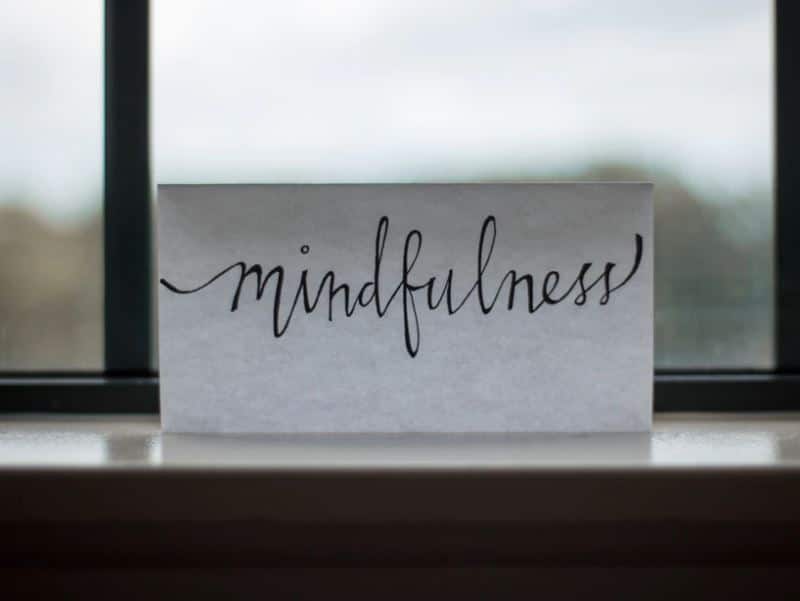You’ve probably heard about mindfulness – from self-help books to schools, it seems to be everywhere. You probably try to be mindful of yourself or have a friend who swears by mindfulness exercises. But what’s the big deal? Is mindfulness really as good as people claim or is it just another fad?
While it has certainly exploded in popularity in the past couple of years, mindfulness is not a fad. It’s not a cure-all, either, but it does have quite a few benefits. Promoting stress reduction and better sleep among other things, mindfulness is a way to pay attention while refraining from judgment. The popularity of the mindfulness movement just means that it’s now easier than ever to get started and reap the benefits.
If you’re looking for ways to incorporate mindfulness into your daily routine, keep reading. In this article, I’ll take a look at what mindfulness is and why it’s good for you.
Contents
What is mindfulness?
Everyone has some idea about what mindfulness is, and those ideas are usually related to concentration, breathing, and general awareness. While overly simplified, those ideas aren’t wrong.
The “father” of mindfulness, Jon Kabat-Zinn, defines mindfulness as:
“The awareness that arises from paying attention, on purpose, in the present moment and non-judgmentally.”
Put simply, mindfulness is all about being here and now and suspending all judgment. In a way, it should come very naturally to humans, because physically, we have no other choice but to be here and now.
Example of why it’s hard to mindful
Unfortunately, that is not the case mentally. We are constantly worrying about the past or the future, going about our day on autopilot and paying little attention to our surroundings, and most importantly, humans are naturally quite judgmental. We are always categorizing things as ‘good’ or ‘bad’, as ‘attractive’ or ‘ugly’.
And all of this is very automatic. We rarely notice that our thoughts have drifted away or that we are doling out judgments about strangers’ shoes or the way someone walks.
I am a worrier and naturally quite an anxious person, and I personally find that mindfulness doesn’t come easy for me. Even though I’m very aware of mindfulness (at least I like to think so), I fall back into my automatic patterns easily.
For me, the best example of this is eating. At work, my lunch is 10 minutes and I usually wolf it down while discussing something with a colleague. At home, my dinners are usually spent watching Netflix or reading while eating.
This means that I’m never fully concentrated on one thing, and I’m neither present nor paying attention.
When I try to eat mindfully,I find that I get bored halfway through my lunch and my hand reaches for the phone.
I often hear similar stories from my students. They tried to meditate, but it didn’t work. They want to be here and now, but the thoughts just keep coming. They understand the idea of mindfulness, but it’s so difficult to practice!
Something that helps me be mindful is focusing on the purpose and I’ve found that the easiest way to find purpose is to focus on the benefits.
The benefits of mindfulness (according to science)
One of Jon Kabat-Zinn’s first applications of mindfulness was an 8-week program called mindfulness-based stress reduction (MBSR) aimed at people with chronic pain. Since then, MBSR has been shown to reduce stress in stress-prone populations like cancer patients and medical students, not to mention regular, healthy people.
Mindfulness reduces stress
There is a reason why mindfulness is so good for alleviating and preventing stress. To understand why we have to look at the scientific definition of stress. Stress, as defined by Hans Selye in 1936, is the non-specific response of the body to any demand for change.
For many people, stress is inherently negative and often related to mounting responsibilities and work, because we usually talk about stress in that context. It’s important to know that we need a certain level of stress to be active in the first place, so a little bit of stress is good.
Mindfulness vs. stress example
In actuality, however, stress isn’t inherently good or bad; it’s a very subjective phenomenon. Whether we sense stress as good or bad is entirely up to us. But, as mentioned above, most people perceive stress as something negative.
That’s where mindfulness comes in. It helps us become more aware of our own biases and reactions that are causing us more stress.
For example, when we’re stressed, we may snap at people more easily, or perceive their actions to be malicious towards us. Instead of relieving the tension, it usually makes us more agitated and stressed.
But when we learn to pay attention to our reactions and suspend judgment, we may find it easier to move on with our day and relax.
Mindfulness helps manage your emotions
Another benefit of mindfulness that is closely related to stress reduction is emotion regulation. According to a 2012 paper, practicing mindfulness is related to greater emotion differentiation and fewer emotional difficulties in young adults.
In another study, a short mindfulness intervention was shown to benefit emotion regulation on a neurobiological level – meaning that mindfulness can change how certain areas of the brain work.
If your job is burning you out, mindfulness may be the answer. A study conducted at Maastricht University showed that practicing mindfulness is related to higher job satisfaction and lower levels of emotional exhaustion.
The same authors also studied the effect of a low-intensity mindfulness intervention on people’s recovery from work, including psychological detachment, sleep quality, and sleep duration. While findings revealed positive effects of mindfulness on sleep quality and duration, there was no effect on psychological detachment.
Mindfulness isn’t just beneficial for your mental health. After all, it was first used for chronic physical pain. Research has found that besides pain, mindfulness interventions can be helpful in the case of clinical colds, psoriasis, irritable bowel syndrome, diabetes, and HIV.
In most of these cases, mindfulness works because it helps us to stay here and now and accept things the way they are, without giving judgment.
How to make mindfulness work for you
If you’re itching to get mindful now, but don’t know where to start, don’t worry. Everyone’s mindfulness journey is a little different, but here are a couple of tips and examples of how to get started.
1. Eat slowly
If you recognized yourself in my example about eating, this one’s for you. Eating is a good place to start your mindfulness journey because it’s something we do every day, but we rarely give it our full attention. Instead of scarfing down your meals, learn to pay attention to them.
To get started, try the chocolate activity. Take a piece of chocolate and resist the urge to eat it. Focus on the feel of the chocolate in your hand. How much do you think it weighs? Explore the texture. Is it starting to melt between your fingers?
Now look at the piece of chocolate and try to notice all the colors and shadows. Take your time. If your mind starts to wander, that’s okay. Just bring your attention gently back to the chocolate.
When you’re ready, smell the chocolate. What can you smell?
Finally, take a small bite of the chocolate and let it melt in your mouth. Notice the taste and sensations on your tongue. Slowly swallow the chocolate and notice any lingering tastes and sensations.
At the end of the activity, take a little time to reflect. What did you notice during the exercise? How can you apply this experience to other meals or areas of life?
2. Practice your breathing
Breathing is an important part of mindfulness. It’s something we do naturally and automatically but rarely focus on. A good example of mindfulness practice is the 3-minute breathing space exercise:
- Attend to what is. The first step invites attending broadly to your experience, noting it, but without the need to change what you observe.
- Focus on the breath. The second step narrows the field of attention to a single, pointed focus on the breath in the body.
- Attend to the body. The third step widens attention again to include the body as a whole and any sensations that are present.
Each step should last for about 1 minute.
While you’re breathing, you’re learning how to narrow or broaden your attention and focus and how to observe without judgment.
3. It is what it is
A part of being mindful is being able to say just that: it is what it is. One of the best lessons you can learn in life is recognizing what you can change and what you can’t and making peace with it.
My job largely consists of helping people make changes in their lives and selves. It’s almost embarrassing how often I find myself feeling frustrated because I can’t make the changes for them. So my mindfulness journey largely consists of fighting this need to control things I have no control over.
You probably have examples of this in your own life. If you want to learn how to be more mindful, I recommend taking stock of what you can control or change. Make sure you understand the difference between having control over something and wanting to control something.
Got the list? Good, now learn to say, “It is what it is” to everything else.
Wrapping up
Mindfulness has quite a few benefits, from stress reduction to better sleep. Like many good things, it’s simple in nature but requires practice and commitment to work. But when it works, it really works. It’s now easier than ever to get on the mindfulness train, and practice being present with no judgment, so what are you waiting for?
Have you embraced mindfulness to lead a happier life yourself? Do you have any experiences to share with the rest of the world? I’d love to hear all about it in the comments below!

